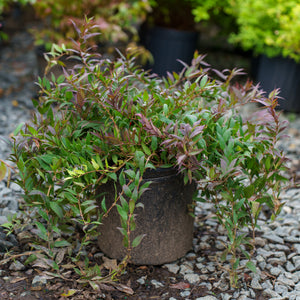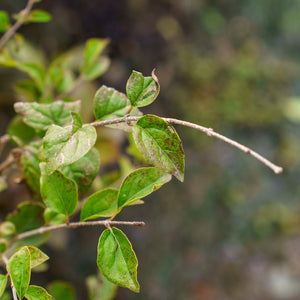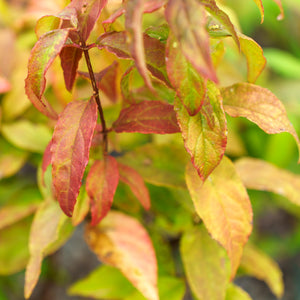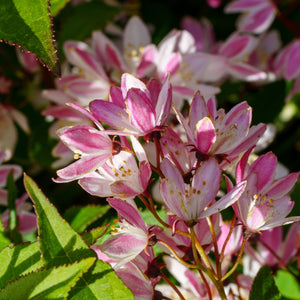The Deutzia Guide
Deutzia is a versatile and underused group of deciduous flowering shrubs valued for their cascading clusters of star-shaped flowers and graceful arching branches. These spring and early summer bloomers bring a refreshing touch to the landscape with their frothy white, blush, or pale pink flowers and often colorful foliage. Low-maintenance and deer resistant, Deutzia shrubs are increasingly appreciated in both formal and naturalistic plantings.
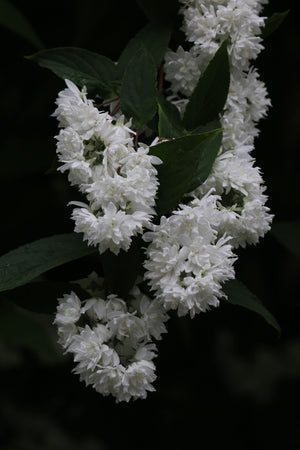
About
Belonging to the Hydrangeaceae family, Deutzia is native to East Asia and Central America, with most commonly cultivated species derived from Deutzia gracilis and Deutzia x rosea. These shrubs are prized for their ornamental value, particularly their profuse blooming habit and neat, compact form.
- Deutzia gracilis 'Chardonnay Pearls' stands out with chartreuse foliage and pure white flowers.
- Deutzia gracilis 'Nikko' is a tidy dwarf cultivar ideal for edging or massing.
- Deutzia gracilis 'Creme Fraiche' features variegated leaves and a compact size perfect for containers or small garden spaces.
- Deutzia x 'NCDX2' and Deutzia x Raspberry Sundae introduce bicolor blooms and more refined branching, enhancing their value as specimen plants.
- Deutzia x rosea 'Nikko Blush' adds a subtle hint of pink to the classic white Deutzia palette.
Whether grown as groundcovers, hedges, or container accents, Deutzia shrubs bring delicate beauty and seasonal interest to sunny and partly shaded gardens.
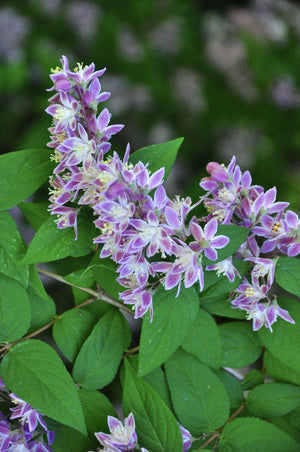
PLANTING
Deutzia shrubs are easy to grow and adapt well to most garden conditions:
- USDA Hardiness Zones: 5–8, depending on cultivar.
- Soil: Prefers well-drained, moderately fertile soil; tolerates clay if drainage is adequate.
- Sunlight: Best flower production occurs in full sun, but light shade is tolerated—especially in hot climates.
- Spacing: Plant 2 to 4 feet apart depending on the mature spread of the cultivar.
- Planting Time: Spring or early fall is best for establishing strong roots.
To plant, dig a hole twice as wide as the root ball and slightly deeper. Mix in compost if your soil is poor. Place the plant so the crown is level with the surrounding soil and water well. Mulch to retain moisture and suppress weeds.
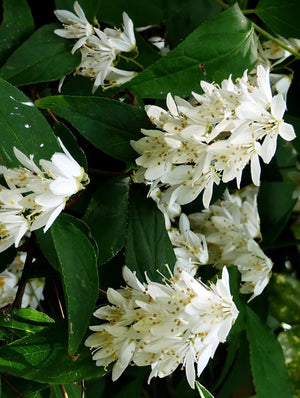
CARE
Deutzia is a low-maintenance shrub once established, requiring minimal pruning and no special feeding:
- Watering: Water regularly during the first year. Once established, Deutzia is drought-tolerant but benefits from supplemental watering during dry spells.
- Fertilizing: Apply compost or a balanced slow-release fertilizer in early spring.
- Pruning: Prune immediately after flowering to maintain shape and encourage new growth. Remove spent flowers and older stems at the base to rejuvenate the plant.
- Mulching: A 2–3 inch layer of mulch helps retain moisture and keeps roots cool during summer.
- Pests & Diseases: Generally pest-free and disease resistant. Overly wet or poorly drained soil can cause root issues, so ensure good drainage.
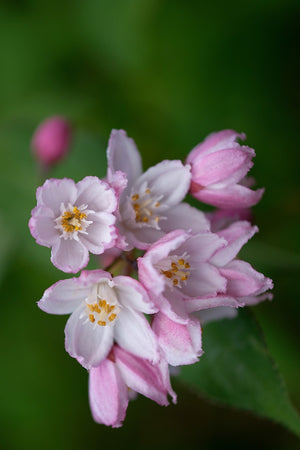
HOW TO USE
With their compact habit and showy blooms, Deutzia shrubs can fill a wide range of roles in the landscape:
- Borders & Foundations: Use 'Nikko' or 'Chardonnay Pearls' along borders or foundations for a neat, polished appearance.
- Mass Plantings: Group several plants together for a striking early-season floral display.
- Understory Plantings: Combine with ferns, hostas, or Heuchera in dappled shade to create layered, textured beds.
- Containers: Compact varieties like 'Creme Fraiche' are ideal for patio pots and mixed planters.
- Pollinator Gardens: Though less showy to pollinators than some other shrubs, Deutzia’s early flowers still provide nectar for bees emerging in spring.
Deutzia also pairs well with plants like Spirea, Weigela, Kolkwitzia, and low-growing conifers to create contrasting textures and bloom sequences.
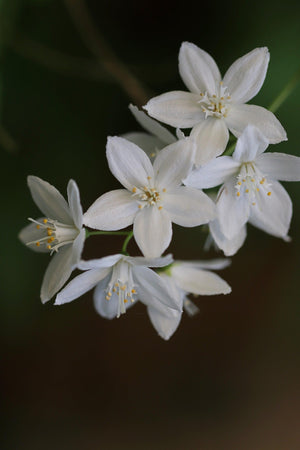
Common Questions
- Is Deutzia deer resistant? Yes, Deutzia is generally deer resistant.
- Is Deutzia evergreen? No, Deutzia is a deciduous shrub and loses its leaves in winter.
- When to prune Deutzia? Prune immediately after flowering in late spring to maintain size and shape.
- Are Deutzia poisonous to dogs? Deutzia is not known to be toxic to dogs.
- Are Deutzia poisonous to cats? Deutzia is not considered toxic to cats.
- Do deer eat Deutzia? Deer typically avoid Deutzia due to its slightly bitter taste.
- Do rabbits eat Deutzia? While not their first choice, rabbits may nibble tender new growth occasionally.
- Does Deutzia grow in the shade? Deutzia tolerates part shade but blooms best with at least 4–6 hours of sun daily.
- How long does Deutzia bloom? Deutzia typically blooms in mid to late spring, with the floral display lasting 2–4 weeks depending on the weather and variety.
Conclusion
Deutzia is a dependable and beautiful shrub that deserves wider use in modern landscapes. Its profusion of spring flowers, tidy form, and resistance to deer and pests make it a reliable performer in a wide range of garden settings. With newer cultivars like 'Creme Fraiche' and 'Raspberry Sundae' offering improved foliage and flower color, Deutzia has evolved into a more ornamental and adaptable plant that works as well in small gardens as in expansive mixed borders.
The Deutzia Collection
Sold Out


